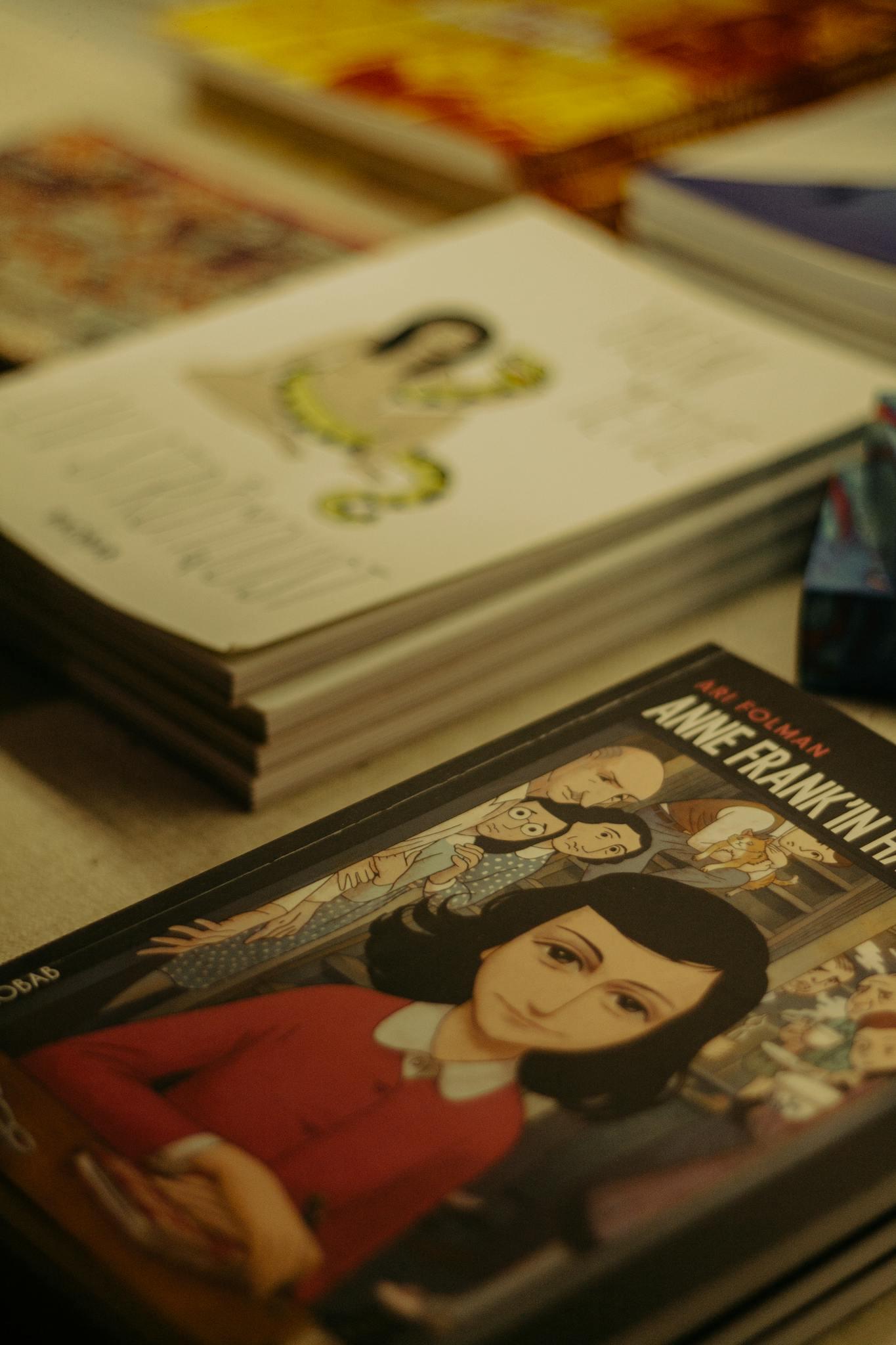Sketching History: A Review of Anne Frank's Iconic Story in Graphic Adaptation
Anne Frank’s Diary: The Graphic Adaptation is a heart-wrenching graphic novel of Anne Frank’s The Diary of a Young Girl, illustrating the horrors of her life during the Holocaust. Adapted by Ari Folman and illustrated by David Polonsky, the story follows Anne Frank, a thirteen-year-old Jewish girl in Amsterdam who had to abandon her home and go into hiding in the “Secret Annexe” of an old office building. Suffering from boredom and faced with hunger and the present fear of being discovered and killed, Anne Frank records vivid stories of her experiences in her diary.
Before picking up this adaptation, I was a bit apprehensive. I wondered how someone could illustrate a story about something so horrific without watering it down or leaving out her personality entirely. She was so introspective and mature for a thirteen-year-old girl, having to come to terms with the fact that she was victim of a horrific genocide while still trying to preserve some semblance of her personal life.
Once I started reading, I often found myself comparing it to my experience reading the novel. As was stated in the “Adapter’s Note,” many of her journal entries were left out to keep the adaptation succinct, and the entries that were chosen to be included were well selected. Two pages that really spoke out to me, so much so that I marked them with a tab to be able to go back to, were pages 108 and 109. The juxtaposition between these two pages is stark. The splash on page 108 depicts a dream Anne had that’s filled with typical teenage fantasies about boys and fears. There’s also the outlandish image of her ice skating in the attic. This page even contrasts itself with the top portion showing her child-like personality and her teenage desire for romance and the bottom portion showing a more mature and tragic story. After that strange dream, we’re immediately hit with the horror of the families losing their only food supplier to the Nazi’s and being left with the realization that they will begin to suffer from starvation. We were ripped away from a dream and thrown into the tragic reality of her situation. Even then, her personality is still able to shine through, like in the panel showing two people performing a surgery on a rotten potato because she claims that the potatoes in her home are diseased and require surgery. It’s a comedic moment, but you quickly are filled with dread once you remember why she’s even making the joke.
I also enjoyed the page breaks in between that were simple diary entries with little to no illustrations to accompany them. We see much of Anne’s whimsical teenage mind, that when she starts to write more maturely in her entries, it’s quite a shock. The pages without many illustrations mark this shift in her tone. She starts to take her romantic life more seriously and develops a deeper connection with Peter, and she begins to write more philosophically. These pages truly show how she’s being forced to mature due to her unfortunate circumstances.
It’s also interesting to note the color contrasts between her life in hiding, and the life outside of her hiding place. The panels depicting her life, whether it be in the attic or in her fantasies, have a lot more color and contrasts. The panels depicting anything to do with the Nazis are more muted and include more neutral shades, which further shows the contrast between her life in the attic, filled with her whims, and the tragedies taking place right outside the walls.
Strangely enough, when reading the original novel, I couldn’t help but be more focused on the Holocaust itself. Perhaps it was because I read it during a time when I was learning about the history, but despite her journal entries being more about her own experiences, whether it was as a result of the Holocaust or simply her aging, I couldn’t help but focus more on the negative aspects of her life. Of course, it’s important to recognize the dreadful situation she was forced into, but it’s also important to think about her and understand the fact that she was merely a child and already had to deal with the fear of not being able to fulfill her future desires. The graphic adaptation does a wonderful job in providing this balance between the two, and it allowed me to feel a connection with Anne and the inner workings of her mind. The illustrations provide the reader with her child-like innocence that some may miss when they read the original novel due to the fact that her writing sounds so mature.
All in all, Ari Folman’s Anne Frank’s Diary: The Graphic Adaptation masterfully captures Anne’s remarkable story in a visually compelling format. Through its illustrations of Anne’s words, it preserves the power of her diary while introducing it to a new generation of readers. This adaptation will forever stand as a timeless tribute to one of history’s most courageous voices.

Post a comment